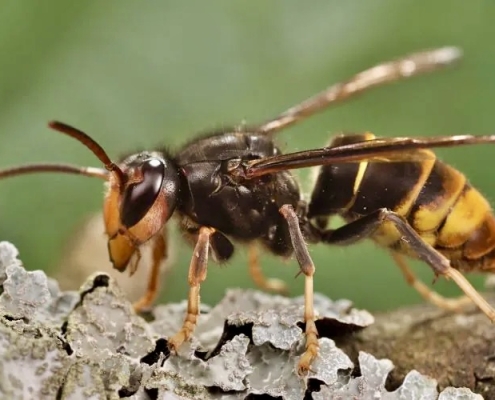What does the YLAH eat?
Yellow Legged Asian Hornets are voracious foragers and a colony usually produces around 6,000 individuals in a season and will consume more than 11Kgs of insects (that’s the equivalent of more than 100,000 honeybees) between April to September, the 6 month period that the workers are active. Analysis has detected morethan 150 varieties of insect make up the YLAH diet. But it’s fair to say that a colony of honeybees represents the equivalent of an all you can eat buffet for a YLAH with individual hornets consuming up to 50 bees a day.
The economic impact through the loss of pollinators is wide ranging with the variety of pollinators that make up the diet of the YALH. Also in France they are seeing YLAH feeding on grapes and spoiling the harvest as the damage causes the grapes to rot.
Does the YLAH have any Natural Predators?
In South East Asia where the YLAH originates from it has just a few natural predators with the two main ones being the crested honeybee buzzard and red back shrike (which are not native in Europe). The European Honeybee buzzard has been seen to attack and feed on the larvae in YLAH nests in parts of Spain and France but the raptor is a migratory bird from Africa and is not widely found across Europe. Apis Mellifera is not present in SE Asia and so has not evolved to cope with the threat from YLAH.
The main honeybee species in the region is Apis Cerana and this does appear to have evolved to cope with YLAH. Returning Apis C. foragers make a swift and direct return straight into the hive compared to the somewhat meandering behaviour that returning Apis M. foragers exhibit. This makes Apis C. less of a target for hawking YLAH workers. Also guard bees of Apis C. are able to kill hawking YLAH workers by balling them – they can raise the temperature to a sustained 45ºC which is high enough to kill the YALH (Apis C. Can withstand temps of 50ºC) Apis M. isn’t able to do this – typically only reaching temps of 40ºC for very short periods when they have been observed balling wasps or European hornets.


